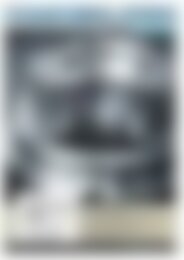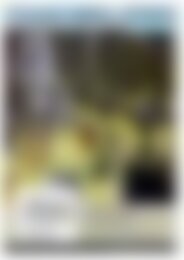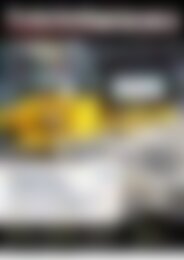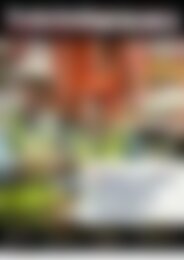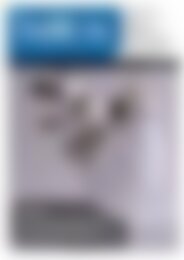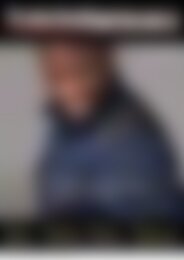Essais & Simulations n°140
Des moyens essais pour répondre aux enjeux et exigences de l'industrie.
Des moyens essais pour répondre aux enjeux et exigences de l'industrie.
Create successful ePaper yourself
Turn your PDF publications into a flip-book with our unique Google optimized e-Paper software.
DOSSIER
SPÉCIAL JEC WORLD
Compression tests
Is it possible to develop a transversal
expertise in polymer matrix composite
materials? Scientific issues revolving
around the fire behaviour of aeronautical
materials, with little national and
international attention, this collaboration
has quickly proven to be fruitful and has
led to the exploration of new avenues.
WHAT HAVE YOU FOUND AND
WHAT ARE THE RESULTS OF YOUR
RESEARCH?
The instrumented platform responds to a
technological lock by offering the possibility
of evaluating the in-situ evolution
of thermal (temperature mapping)
and mechanical (force, displacement,
deformation fields) responses during
a combined test. It therefore allows to
understand neither the mechanisms of
thermal degradation, nor the physical
phenomena that operate in critical fire
conditions. It is thus possible to access
knowledge of the fire behaviour of aeronautical
materials. Finally, this means of
characterization has a strong potential for
industrial deployment.
WHAT IS THE AEROFIRE PLATFORM
BASED ON AND WHAT DOES IT
CONSIST OF?
The demand of aeronautics industrialists
for adapted and relevant experimental
characterization means is
therefore strong. They have identified
a technological lock in the fire resistance
of materials. Therefore, it is essential to
enable aeronautics manufacturers to
understand/predict the thermo-mechanical
response of their materials in
different configurations and, ultimately,
of their parts and assemblies.
This is the interest and ambition of the
Aerofire platform developed within
the framework of the Carnot Decolle
project.
CAN YOU TELL US MORE ABOUT
THE CHARACTERISTICS OF THE
DECOLLE TEST PLATFORM ?
The application of mechanical stress
during exposure to fire corresponds
to the most critical situation of use in
service. In order to reproduce these
critical conditions on a laboratory scale,
this test platform has been developed
to combine mechanical loading and
thermal aggression (via a calorimeter
cone). The relevance and originality of
this test bench is based on the control
and very good reproducibility of the
stresses (thermal and mechanical). The
multi-physical investigation capabilities,
in terms of the study of thermal-mechanical-physicochemical
couplings, offered
by this bench are transferable to an
industrial scale.
HOW WILL THESE PLATFORMS BE
INTEGRATED INTO THE INDUSTRIAL
ACTIVITY? DO YOU ALREADY HAVE
INDUSTRIAL APPLICATIONS AND
WITH WHICH PARTNERS?
Despite the convenience of use and
control, the use of a radiant source to
reproduce the effects of a fire exposure
does not make it possible to account
for the full physical reality of a fire.
Aggression by a flame induces other
physico-chemical transformations and
a more critical degradation of the material,
strongly impacting its mechanical
resistance. In order to reproduce as
faithfully as possible the critical conditions
in service according to the standards
in force (116kW/m² flux and
surface temperature of 1150°C), the
bench developed is currently evolving
by integrating a kerosene burner in
order to gain a finer understanding of
the fire resistance of composite materials.
A Cifre thesis in partnership with Safran
Nacelles has begun on the problem
of fire resistance of composite/metal
assemblies. Since the end of 2019, a
project with the company Daher has
been studying the thermo-mechanical
coupling in thermoplastic composites
subjected to a kerosene flame. These
collaborations with major players in the
aeronautics industry confirm the relevance
of the means developed and allow
to acquire a rare expertise. ●
Interviewed by Olivier Guillon
48 IESSAIS & SIMULATIONS • N°140 • février - mars 2020





